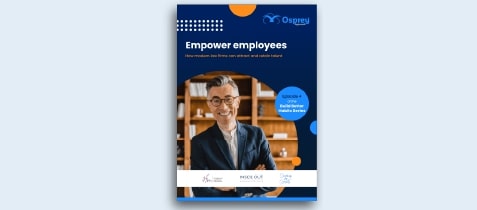Contents
Lessons learned from switching legal software solutions: Insights from Karen Edwards
In this conversation with Karen Edwards, head of professional development at the ILFM, and former director at an SME law firm, she shares her critical lessons learned from switching and migrating practice and case management systems to help you improve success.
In episode ten of our Empowering Law Firm Leaders podcast, we discuss where to start before investing in a new system, best practices for data migration, and how to improve team buy-in.
In this conversation we cover:
- How to effectively prepare before choosing the right system
- Best practices for migrating data
- Tips for building the right project team
Karen’s top three lessons learnt from implementing new practice and case management software
- Ask the right questions
Karen emphasises the significance of asking the right questions before selecting a new legal software solution. “Making sure that you ask the right questions is crucial throughout an implementation and migration project to ensure that you are investing in the right products,” she explains. This involves a thorough internal assessment to understand what your firm needs and expects from the new system: “Fully understand what your current challenges and goals are; thinking about what you need from a new system is critical.”
- Engage your team from the outset
“Buy-in is so important, the whole change management piece is really,” Karen shares. Engaging your team early in the process ensures that the system meets the needs of all users, from the finance department to the support team.
Karen recounts an example where a firm switched systems without adequate consultation, leading to significant issues. “Within three months, they found that the financial package wasn’t working for them, and they had to revert to their previous system.”
Karen recommends, “rather than just having an IT team [on the project], that doesn’t know what the accounts team needs to be compliant, or what the firm’s partners or directors need from management information, [involve] the people that are actually going to be using it on a day-to-day basis. It’s really important to bring your people along on that journey from all areas of the business.”
- Plan for long-term investment
Karen also stresses the need to understand the long-term investment requirements of new systems. “Really understand the longer-term future investment requirements of systems,” she advises. This includes considering the costs of customisation, ongoing support, and potential future upgrades.
She points out that some systems may appear cost-effective initially but require significant investment in customisation and development to meet the firm’s needs. “You might be getting just the basic shell and then have to invest tens of thousands of pounds in either a consultancy team or internal staff to fully customise the system,” she explains. Properly scoping out these costs and planning for them is essential to avoid unexpected financial burdens.
How to effectively prepare for migrating to a new practice management solution
Karen highlights the common pitfall of firms rushing into decisions without adequate due diligence. “Some firms fall into the trap of wanting to change and improve their systems quickly, but they don’t spend enough time ensuring the new system fits their specific needs,” she notes. This can lead to costly mistakes, including the need to switch systems multiple times within a short period, which disrupts productivity and impacts the firm’s bottom line.
Karen advises firms should, “have a clear idea as to where you are trying to go; what your strategies are; what your aims are; and how that you can find a technology solution that fits that. You don’t want to set your firm up to fail.”
As well as understanding what you want the system to achieve, Karen advises that firms are realistic about their timescales and communicate them to the firm: “It’s important to be both realistic and pragmatic when planning a major kind of migration project.”
Preparing your data is the final step to preparing for implementation. Karen explains, “A lot of mistakes and frustrations arise when firms don’t spend the time and money just focusing on the migration of the data.
“If you’re thinking about moving in a few years’ time to a new system, then start thinking about your data now… The data going into your systems is one of the most important things to be thinking about before you can start looking at transitioning over, because you don’t want to be working with rubbish data every day… It just slows you down.”

About Karen Edwards
Karen Edwards is a seasoned legal professional with over 14 years of experience in the legal industry. Before joining the Institute of Legal Finance & Management (ILFM) as the Head of Professional Development, Karen worked in various law firms, including serving as a director at an Oxfordshire law firm.
Throughout her career, she has been deeply involved in multiple transitions and migrations of practice and case management systems. This extensive hands-on experience has provided her with valuable insights into the challenges and best practices associated with legal software implementation. Karen shares: “Having gone through migrating systems several times, it’s been quite eye opening, and now I can share those learnings and experiences to ILFM members to help with the challenges you may be facing when selecting a new system.”
Best practices for successfully migrating data
Data migration is often a daunting aspect of switching systems, especially for firms with a long history and extensive records. Karen emphasises the importance of data cleansing early. “It’s useful to undertake an exercise beforehand on cleansing as much of that data as possible,” she advises. This helps ensure that only relevant and accurate data is transferred to the new system, avoiding the perpetuation of historical issues. “Even if you’re not thinking about transitioning immediately, start working on your data now,” she suggests. Regularly updating and cleaning data ensures that when the time comes to migrate, the process is smoother and more efficient.
Not all data needs to be migrated. Karen advises firms to critically assess what data is essential for the new system. “Decide whether you want to migrate all data, some data, or just start fresh with opening balances,” she explains. This decision should be based on the firm’s needs and the capabilities of the new system.
Testing is a crucial step in the data migration process. “Make sure you do enough trial runs,” Karen shares. This involves conducting multiple test migrations to ensure that data is accurately transferred and functional in the new system. “Check that balances are correct, references are accurate, and documents are in the right place,” she adds.
Law firms must also consider how they will access historical data post-migration. “Ensure you have a plan for ongoing accessibility of your data,” Karen advises. This might involve keeping the old system accessible for a period or ensuring that all necessary data is transferred to the new system.
Building a successful implementation team
Creating a dedicated project team is another key recommendation from Karen. “Get engagement from the outset from your whole team,” she emphasises. This includes appointing super users or champions within each department who can provide feedback, assist with training, and act as a liaison between their team and the project leaders.
Super users play a critical role in the implementation process. “Having super users or champions within each department is really key,” Karen explains. These individuals are typically more tech-savvy and can help train their colleagues, provide feedback, and troubleshoot issues. “They act as the first port of call for their teams and can provide ongoing support and training,” she adds.
Successful implementation requires input from all departments, at all stages of the project. “Make sure you have collaboration from all key areas of the business,” Karen suggests. This includes finance, fee earners, support staff, and operations. Each department will have different needs and requirements, and their input is crucial for selecting a system that works for everyone.
Implementing a new system requires significant time and resources. “Make sure your team has the capacity to commit the time required,” Karen advises. And always listen to and action feedback. “Do request feedback, but more importantly, listen to it,” she says. This ensures that the system meets the needs of all users and increases buy-in across the firm.
Finally, Karen highlights the importance of ongoing training and support. “Training is such a huge thing and will help massively with the ROI,” she says. Ensuring that training is conducted at the right time and is tailored to the needs of different departments is crucial for maximising the benefits of the new system.
Successfully implement new practice and case management software
Switching legal software solutions is a significant undertaking that requires careful planning, thorough due diligence, and active engagement from the entire team. By asking the right questions, involving all stakeholders, planning for long-term investment, and ensuring continuous training and support, SME law firms can successfully navigate this process to ensure the technology investments meet their goals and needs and are a long-term solution.
Karen’s insights provide a valuable roadmap for firms looking to switch practice and case management systems to stay competitive in the modern legal landscape: “I love technology, and there are so many great systems out there. But it’s easy to get overwhelmed by the choice.
“Start by understanding what you need, include all relevant stakeholders, and get feedback to make sure everyone is onboard.”
Watch the full interview with Karen Edwards now to discover more advice and guidance on switching software and hear more real-life examples of success and failures from Karen’s experience.





